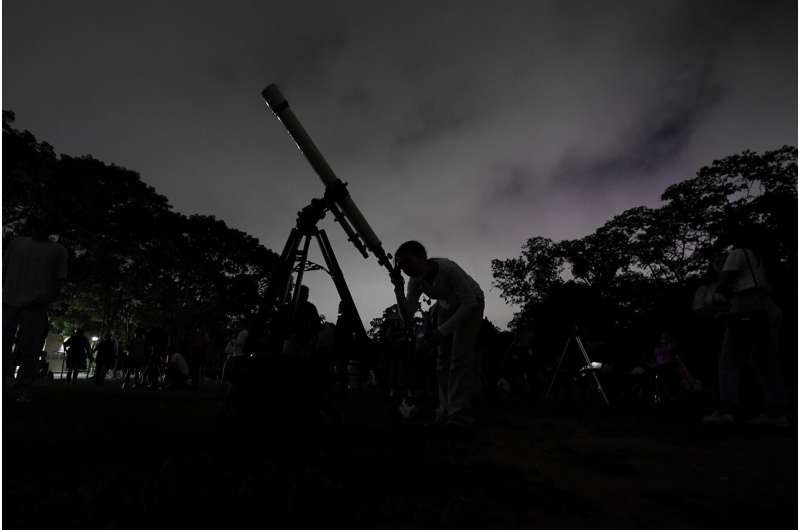This article has been reviewed according to Science X's editorial process and policies. Editors have highlighted the following attributes while ensuring the content's credibility:
fact-checked
reputable news agency
proofread
What you will and won't see from June's planetary parade

Six planets will link up before dawn on June 3 in what's known as a planetary parade. But the spectacle won't be as eye-catching as expected: Only two planets will be visible to the naked eye.
Here's what to know about this fairly common celestial event.
WHAT IS A PARADE OF PLANETS?
Our solar system's planets zip around the sun at an angle. Every once in a while, several align on the right side of the sun to be visible across a narrow band of Earth's sky.
How common the phenomenon is depends on how many planets align and whether or not they are visible without binoculars or a telescope. A handful of planets are usually in the night sky at any given time, though they can be obscured below the horizon or blocked out by the sun's light.
WHAT WILL BE VISIBLE DURING THE PLANET PARADE?
Unfortunately, this planetary parade of Mercury, Mars, Jupiter, Saturn, Uranus and Neptune won't offer much of a view.
"The sun's going to be photobombing the parade," said Ronald Gamble, a theoretical astrophysicist at NASA's Goddard Space Flight Center.
Mercury and Jupiter will be too close to the horizon to be visible, blotted out by the rising sun. Uranus and Neptune can be glimpsed only with a telescope, though Uranus may be too close to the sun to be visible.
Early risers can still look to the east to spot a waning crescent moon on the lower left, followed by a faintly red Mars and pale yellow dot of Saturn. Both planets are already visible in the early mornings and will be for much of the summer.
WHAT ELSE CAN I SPOT IN THE SKY THIS SUMMER?
While June's planetary parade may not dazzle, the night sky still offers wonders to spot.
The summer offers great weather to explore the night sky with a star or planet-viewing app, said Michelle Nichols at Chicago's Adler Planetarium.
And the annual Perseid meteor shower is expected to peak in mid-August with quick streaks of light. Nichols recommends observing the shower away from city lights and allowing your eyes to adjust to the dark for prime viewing.
© 2024 The Associated Press. All rights reserved. This material may not be published, broadcast, rewritten or redistributed without permission.





















